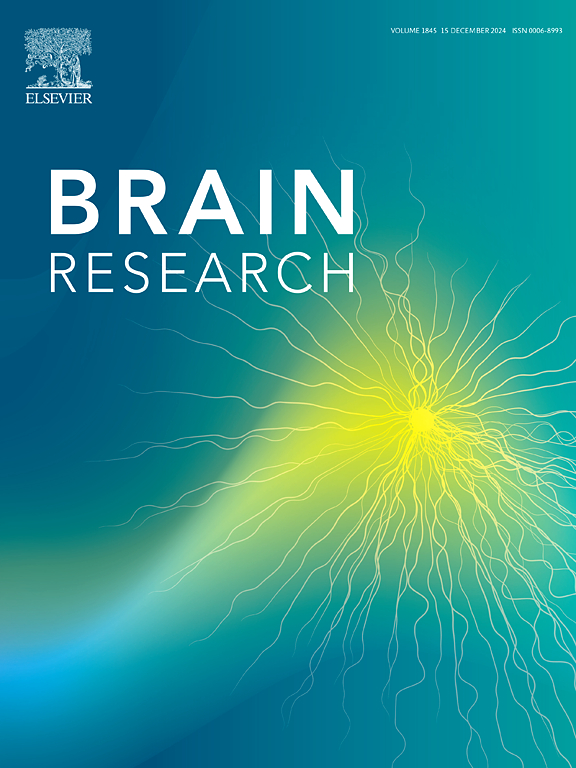The virtual hand paradigm: A new method for studying prediction and language-vision interactions
IF 2.7
4区 医学
Q3 NEUROSCIENCES
引用次数: 0
Abstract
We introduce a new method for measuring prediction and language-vision interactions: tracking the trajectories of hand-reaching movements in Virtual Reality (VR) environments. Spatiotemporal trajectory tracking of hand-reaching movements in VR offers an ecologically valid yet controlled medium for conducting experiments in an environment that mirrors characteristics of real-world behaviors. Importantly, it enables tracking the continuous dynamics of processing on a single-trial level. In an exploratory experiment, L2 speakers heard predictive or non-predictive sentences (e.g., “The barber cuts the hair” vs. “The coach remembers the hair”). Participants’ task was to move their hands as quickly and as accurately as possible towards the object most relevant to the sentence. We measured reaction times (RTs) and hand-reaching trajectories as indicators of predictive behavior. There was a main effect of predictability: Predictable items were touched faster than unpredictable ones. Importantly, uncertainty was captured using spatiotemporal survival analysis by prolonged fluctuations in upward and downward vertical hand movements before making a final move to target or distractor. Self-correction of prediction errors was revealed by participants switching the direction of hand-reaching movements mid-trial. We conclude that the virtual hand paradigm enables measuring the onset and dynamics of predictive behavior in real time in single and averaged trial data and captures (un)certainty about target objects and the self-correction of prediction error online in ‘close to real-world’ experimental settings. The new method has great potential to provide additional insights about time-course and intermediate states of processing, provisional interpretations and partial target commitments that go beyond other state-of-the-art methods.
虚拟手范式:研究预测和语言-视觉互动的新方法。
我们介绍了一种测量预测和语言-视觉互动的新方法:在虚拟现实(VR)环境中跟踪手部伸展运动的轨迹。在虚拟现实环境中对手部伸展运动进行时空轨迹跟踪,为在反映真实世界行为特征的环境中进行实验提供了一种生态有效且可控的媒介。重要的是,它能在单次试验水平上跟踪处理过程的连续动态。在一项探索性实验中,L2 说话者听到了预测性或非预测性句子(例如,"理发师剪头发 "与 "教练记住头发")。参与者的任务是以最快的速度、尽可能准确地把手移向与句子最相关的物体。我们测量了反应时间(RTs)和手伸向物体的轨迹,作为预测行为的指标。可预测性存在主效应:与不可预测的物品相比,可预测的物品被触碰的速度更快。重要的是,不确定性是通过时空存活分析捕捉到的,即在对目标或分心物做出最终动作之前,手部向上和向下垂直运动的长时间波动。参与者在试验中途改变伸手动作的方向,揭示了预测错误的自我纠正。我们的结论是,虚拟手范式能够在单次和平均试验数据中实时测量预测行为的开始和动态,并能在 "接近真实世界 "的实验环境中捕捉对目标对象的(不)确定性和预测错误的在线自我纠正。这种新方法具有巨大的潜力,可以提供更多关于处理的时间过程和中间状态、临时解释和部分目标承诺的见解,超越了其他最先进的方法。
本文章由计算机程序翻译,如有差异,请以英文原文为准。
求助全文
约1分钟内获得全文
求助全文
来源期刊

Brain Research
医学-神经科学
CiteScore
5.90
自引率
3.40%
发文量
268
审稿时长
47 days
期刊介绍:
An international multidisciplinary journal devoted to fundamental research in the brain sciences.
Brain Research publishes papers reporting interdisciplinary investigations of nervous system structure and function that are of general interest to the international community of neuroscientists. As is evident from the journals name, its scope is broad, ranging from cellular and molecular studies through systems neuroscience, cognition and disease. Invited reviews are also published; suggestions for and inquiries about potential reviews are welcomed.
With the appearance of the final issue of the 2011 subscription, Vol. 67/1-2 (24 June 2011), Brain Research Reviews has ceased publication as a distinct journal separate from Brain Research. Review articles accepted for Brain Research are now published in that journal.
 求助内容:
求助内容: 应助结果提醒方式:
应助结果提醒方式:


